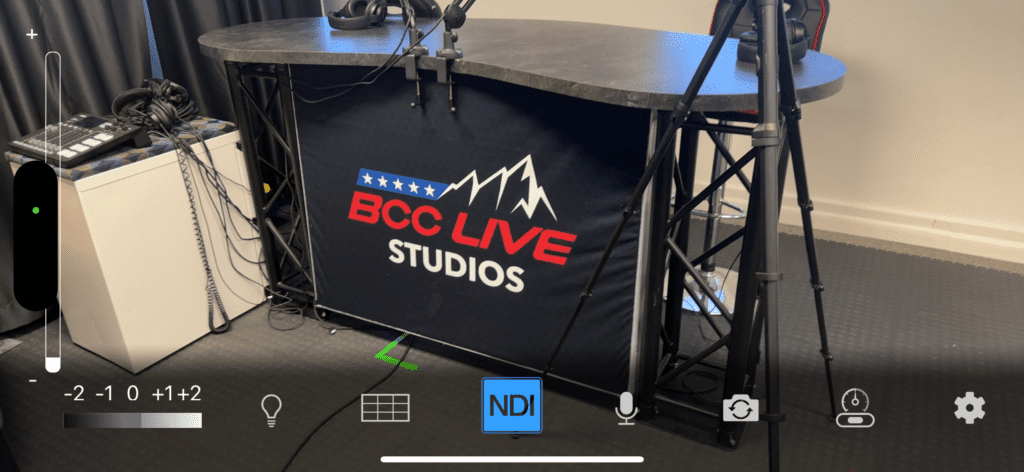There’s no way to argue it: adding a livestream of your event is a huge value add. While it may be tempting to have the exclusivity of a “be there or be square” in-person event… The fact of the matter is that livestreaming any event is a huge win for, above all else, accessibility. Not all events are in-person accessible to those with disabilities, those who can’t afford to travel, and those who just happened to miss the memo.
Having a livestream of the key points and memorable moments of your event not only gets more eyes on your event, it also serves as a record for later audiences of why your next event is worth going to! The more you can do to extend a hand to those who can’t attend… The more likely you are to raise overall enjoyment…
…but when you hear “livestreaming an event,” it can sure sound like an insurmountable hill to climb. The sky’s the limit for getting a live event on the Internet for everyone to see, all the way up to tens of thousands of dollars of cinema-grade equipment and a full studio. But thanks to modern technology, you can get your event online with low hassle and an affordable price! Let’s go on a journey from the absolute barebones to a top-tier show.
Livestreaming My First Event
Before you even get into any worries about the cost of livestreaming and equipment… Remember you have a perfectly good livestreaming solution right in your pocket! Modern smartphones have a winning combination of high-quality cameras, fast processors, and redundant network access to provide a quick and easy livestreaming solution on demand. Any smartphone released in the last few years likely has solid performance and reliability to give you a simple livestream to your platform of choice… With just a few minutes of work!
If it’s any indication that you should consider your phone for your first livestreaming tool, many pieces of professional-grade equipment are built to interface with the cameras or the wireless modems on a modern smartphone as a backup. And it can be a lifesaver!
Keep in Mind…
There are a few things to keep in mind when streaming from a phone, however. One crucial point is battery life. While smartphones have batteries that last all day in light use, the toll of shooting and encoding video causes that time to plummet. An external battery or charging case (which you probably already have on hand) will give you a hefty chunk of extra time… But it’s even wiser to just plug your phone in while it’s working.
What’s more, you should keep in mind all of the extra things your phone can do… it’s not ideal to have a livestream interrupted by a call or a notification! (If you have an old phone lying around you haven’t traded in, that’s an even better choice that your current day-to-day device.)
And, of course… Keep in mind that a smartphone can’t do everything. You’ll need to get very comfortable with editing or sharing a stream in progress on another device, since the phone will be more or less completely tied up in streaming. You won’t have any graphics, and you’re stuck with just the one camera… but it’s still better than nothing! However, we can do better…
Improving a Simple Livestream
How can you elevate a simple smartphone stream? There are a few simple things you can do to take a stream from “home movies”-level to something much better. First of all, a tripod is just about essential for a quality stream. Even if you’re just holding the camera static on a venue or a speaker, having a sturdy tripod to keep things steady (instead of holding your phone or propping it up on something) makes a stream safer and more capable.
Fortunately, you can get perfectly capable tripods made specifically for phones for 20 to 40 dollars. These will help take your team up to the next step. If you need to track moving subjects, it’d be better to splurge on a fluid-head tripod to help keep your shots stable… Or just get lots of practice with a normal tripod beforehand!
Don’t Forget!
We’ve talked about this before, but it’s important to remember that a livestream includes both video and audio. Give your audience the ability to hear the event just as well as they can see it! One of our most beloved pieces of kit is a DJI Mic. It’s a wireless microphone that natively interfaces with your phone or with nearly any device to deliver terrific sound quality with an unbeatable battery life. Pin one of these on your host at an event. Or just set it up close to the most important sounds… It’ll give you pro-grade sound for your stream at a bargain price!
Finally, don’t forget that even a high-quality phone camera isn’t perfect. In particular… Smartphones tend to struggle in low-light environment… And any camera can’t get a good picture when the subject is covered in long shadows! Have a close look at your lighting to make sure your subject is well-lit from the camera’s perspective… Whether that’s a speaker at a lectern or a full outdoor venue. Don’t be afraid to open the blinds or reposition your venue to get the best lighting for your camera… or invest in lights! Even simple hardware-store lights can help keep a livestream looking well-lit all day long, but generally the more you pay the better you get.

Now you’re looking good! You can livestream a good-looking event with this setup… but now, the bottleneck in performance is the limited lenses and capabilities of your phone. Sure, you can get a great picture quality… but your ability to zoom in on a subject is limited as is your ability to process the video before sending it out.
What’s Our Next Step Up?
Adding More Cameras to your Livestream
Adding more (and better) cameras. This is a place where you can start very small. But you can escalate all the way up into a full-scale production as your needs change. The number-one way to make a stream look more professional and engaging is to have multiple cameras at different angles to capture a richer view of the experience. While this too sounds daunting, don’t worry: there’s people all around the world with the same livestreaming needs as you! There’s several tiers of options available to amp up your livestream without breaking the bank.
One of the best beginner options in the world of specialized livestreaming equipment is the Logitech Mevo series of cameras. Mevos are a simple get-up-and-go solution to livestreaming that supports one or multiple cameras… With a focus on ease of use. With just your phone and a couple Mevo cameras, you can get a workable two-camera livestream setup that looks much more professional than its price tag would imply! As long as you have an Internet connection to hook up all the cameras, and the ability to run power to each camera if your event runs longer than a few hours, you’re more or less good to go right out of the box.
Is Simple Always Better?
It’s a great option to consider… but keep in mind that these cameras trade picture quality for their simplicity. They’re not going to look much better than your phone’s camera… And they’re limited to a wide-angle lens that doesn’t play well with close-ups. If you want tight shots or a higher-quality camera, it’s time to look at a different system.

If you’re willing to do a little learning, it might be time to dive into the wonderful world of NDI. NDI is an open-source standard with widespread adoption that provides connectivity between a wide variety of audio and video systems, so long as they’re on the same network.
Let’s Dive Deeper
Imagine having a couple of old smartphones on Wi-Fi for shots of your venue… A Mevo or a cheap webcam getting wide-angle shots of the crowd enjoying the show… And a camcorder on a tripod with a zoom lens to get close-up shots of points of interest… All talking to a central computer that compiles them together into a full livestream production with graphics! That’s the power of NDI-compatible hardware. And if you’re willing to put in the effort, you can get a livestreaming system that’s on par with a broadcast setup… for pennies on the dollar!

Granted, there are some caveats. You need to have a laptop or desktop with livestreaming software—such as Livestream Studio or OBS Studio, which have their own learning curves… But they allow you to insert graphics into your stream and have fine control over every aspect of the production. NDI also requires a decent network connection for all the components to speak to each other, and apart from a few dedicated devices like the Mevo or NDI-developed cameras, every camera needs to be attached to its own computer or phone to get on the network. However, only the livestream is actually going out on the greater Internet, so the connection doesn’t need to be too fast… just consistent.
Set It All Up
The NDI Tools desktop and phone apps handle the majority of the work for you… So long as you’ve installed them properly. With very little configuration, every NDI-capable camera on your network shows up on your computer like it’s a webcam plugged straight into your device. From there, it’s on you to set up your shots, add sound with microphones (like the DJI Mic!), make sure everything is well-lit, and start switching between camera angles like a professional broadcaster.
Although multiple-camera switching is often a job left to a whole studio of people, thanks to pulling all of your inputs into one computer, it’s really a one-person job! Just think about what you’d want to see if you were an attendee at the event. Do you want a closeup on your presenter when they’re having an animated moment, a wide shot of the whole venue as the crowd cheers everyone on, or a special perspective on a particular participant? Switch between shots in your livestream software to follow what you want to see, and it’ll all come together in the end.
Conclusions
Well, that escalated quickly! As you can see, with just a little time and energy invested you can end up with a full-size multi-camera livestreaming setup. But don’t let that stop you from starting small! As we said at the beginning, even a stream from your phone of the high points of your event will only give you benefits. People around the world can tune in to see what’s going on and enjoy your event…and isn’t that all you need?
Want to learn more? Check out these other blog posts…
https://bccliveproductions.com/blog/cutting-edge-html5-graphics-for-broadcasting/
